A high-level attorney for the Beltran Leyva faction of the Sinaloa Cartel has revealed that two of Mexico's busiest international airports, in Cancun and Toluca, are controlled by Mexican drug cartels.
His disclosures shed new light on the mystery which still—more than five years later—surrounds the two planes from St. Petersburg Florida caught carrying almost ten tons of cocaine in the Yucatan.
The revenge of "The Nineteen"
Roberto Lopez Najera (called “The Nineteen” because he’s missing a finger) was a lawyer working for Edgar Valdez Villarreal, the Texas-born cartel enforcer known as "La Barbie" for his blond hair and blue eyes. In 2008, Lopez Najera turned himself in to Mexican authorities (who quickly passed him on to the DEA), offering to reveal all he knew.
His motive was revenge. His boss had murdered his brother, an ill-advised move by “La Barbie” which led cartel insider Lopez Najera to blow the whistle on corruption by top Mexican officials.
One result of Lopez Najera's turning government informant is the recent indictment of four top Mexican Generals on charges of facilitating drug trafficking through the Cancun and Toluca airports,which has quickly become the biggest scandal in the history of the Mexican military.
“La Barbie," meanwhile, often described as “one of the most ruthless drug traffickers in Mexico,” is currently in US custody awaiting trial.
Suspicion (once again) centers on Mexico's new President
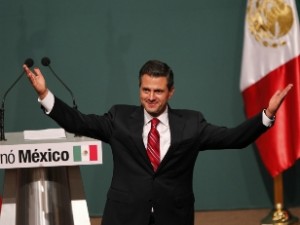 Lopez Najera told the Mexico's Attorney General's Office (PGR) that between 2006 and 2009 the Beltrán Leyva Cartel used the Cancun and Toluca International Airports to smuggle at least 50 tons of cocaine into Mexico from Colombia and Venezuela.
Lopez Najera told the Mexico's Attorney General's Office (PGR) that between 2006 and 2009 the Beltrán Leyva Cartel used the Cancun and Toluca International Airports to smuggle at least 50 tons of cocaine into Mexico from Colombia and Venezuela.
The Toluca Airport is located in the State of Mexico, where new Mexican President-elect Enrique Peña Nieto was the Governor. It is managed by a Spanish company, OHL, which Pena Nieto brought in to run the airport.
"If you just land in Cancun to refuel, and get off the plane to do the paperwork required for an international flight," Lopez Najera told authorities, "you paid only $400,000 to the Federal Police, who controlled the network of corruption.”
By contrast, officials at the Toluca Airport were paid $1 million per flight to look the other way. The drugs were off-loaded in hangers belonging to the Mexican government's Ministry of Public Security (SSP).
St Petersburg, Florida and Toluca, Mexico: Unofficial sister cities?
The testimony of Lopez Najera explains why the Toluca airport figured heavily in accounts of the American planes from St Petersburg busted in the Yucatan: a DC-9 (N900SA) painted to look like a US government plane from the Dept of Homeland Security, and a Gulfstream II business jet (N987SA) used by the CIA in Colombia and in renditions to Guantanamo.
In the case of the DC-9, two ex-military pilots from the Mexican Federal Government’s National Water Commission— both of whom had spent recent time in prison for drug trafficking—flew a Falcon 20 jet from Toluca to meet the DC-9, which was Toluca-bound when it was forced by mechanical problems to land at Ciudad del Carmen in the Yucatan.
Startled soldiers found an unexpected bonanza: 5.5 tons of cocaine.
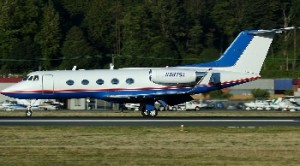 18 months later, the second St Petersburg plane, the Gulfstream II, was also Toluca-bound when it was forced down over the Yucatan after being denied the right to land in Cancun to refuel.
18 months later, the second St Petersburg plane, the Gulfstream II, was also Toluca-bound when it was forced down over the Yucatan after being denied the right to land in Cancun to refuel.
The interdiction of the two planes, which led authorities to discover that major American banks like Wachovia and the Bank of America were laundering tens of billions of dollars of drug money for Mexican cartels, has become a seminal event in the drug trade, the biggest since the killing of Pablo Escobar.
Drug trafficking & the parasitic elite
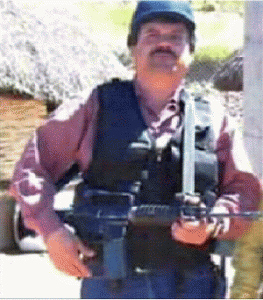 Lopez Najera’s testimony reveals that drug trafficking in Mexico—as almost everywhere, including the U.S.— is the province of what Rolling Stone’s Matt Taibbi calls the “parasitic elite.”
Lopez Najera’s testimony reveals that drug trafficking in Mexico—as almost everywhere, including the U.S.— is the province of what Rolling Stone’s Matt Taibbi calls the “parasitic elite.”
It exposes as fanciful nonsense the idea that Mexican drug kingpins spend their time holed up in the mountains, with bandoliers of ammunition strapped cross-ways across their bare chests.
They’re more likely to be found dining on beef tenderloin with foie gras and wild mushrooms, or lobster tacos with molcajete sauce, as Lopez Najera was when he dined with General Roberto Dawe at the elegant restaurant El Lago overlooking a picturesque lake in Chapultepec Park in March 2007.
“El Lago is one of the most luxurious restaurants in Mexico City,” gushes TripAdvisor.com’s review of the restaurant. “This is a place where you should eat at least once in your life!”
And when leaders of the Beltran Leyva Cartel had a “sit-down” with top honchos from Los Zetas in late January 2008, it wasn’t in the basement of a non-descript safe house, but in the picturesque Silver City of Taxco, at the Hotel Monte Taxco, overlooking a golf course.
They had a lot to talk about. In Cancun, considered the gateway to large drug shipments from South America, the Beltran Leyva cartel controlled the Federal and state police.
Los Zetas controlled the Ministry of Public Security and the state attorney general's office. For their mutual benefit, the two cartels, at war with one another in other parts of Mexico, agreed to co-exist.
Their plan was "to fix the Cancun International Airport to allow flights from South America laden with cocaine to land and re-fuel.”
The central mystery remains mysterious
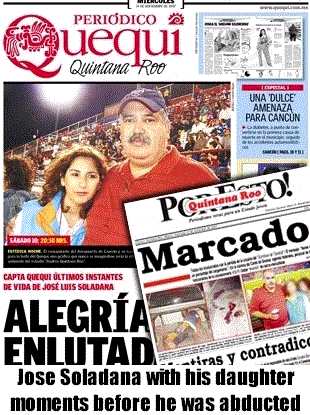 Denying the Gulfstream permission to land put Cancun Airport Manager Jose Luis Soladana between a rock and a hard place.
Denying the Gulfstream permission to land put Cancun Airport Manager Jose Luis Soladana between a rock and a hard place.
After the Gulfstream II crashed, Federal authorities began to suspect him of involvement with the drug traffickers. They were preparing to take him into custody when he was murdered, just hours after authorities had arrested airport dispatcher Martin Gomez Soto, who worked underneath Soladana.
At the same time, he was receiving death threats from the drug traffickers. When the Gulfstream that he wouldn't let land in Cancun ran out of fuel and crashed 25 miles short of the airport in Merida, almost four tons of their cocaine spilled out across several acres of jungle.
They were, perhaps understandably, upset.
Jose Luis Soladana Ortiz paid for his mistake with his life. While attending a soccer game with his family he received a phone call from Lopez Najera, requesting a meeting, where Soladana was shot in the head. While on the ground, he was shot six more times, at point-blank range.
After Soladana's murder, Lopez Najera said a second cooperating witness, scribbled a note and pinned it to his chest. When authorities approached the body, his cel phone began ringing repeatedly.
His killers, still nearby, were mocking investigators.
Unanswered questions
 In Lopez Najera's account, there is no mention of a big question which remains to be answered: Why did Soladana refuse the Gulfstream permission to land?
In Lopez Najera's account, there is no mention of a big question which remains to be answered: Why did Soladana refuse the Gulfstream permission to land?
It has been widely reported that the DEA has a strategy of supporting the Sinaloa Cartel. Is it just a coincidence that since breaking with the Sinaloa cartel, the Beltran Leyva cartel has suffered more losses than any other?
According to Lopez Najera, the drug flights, on twin-engine planes carrying 3.3 or 3.4 tons of cocaine each, originated in Maracaibo, Venezuela.
“The aircraft departed from Maracaibo with the knowledge of Venezuelan Generals,” reported "Reforma."
But the Gulfstream II flight that went down over the Yucatan was universally reported to have originated at an international airport in Rio Negro, Colombia, just outside Medellin, whose big boss, since the fall of Pablo Escobar, has been former Colombian President Alvaro Uribe.
Maybe the DEA is now backtracking to protect Alvaro Uribe; but, in any case, one thing's for sure:
In America's endless drug war, stranger things happen all the time.



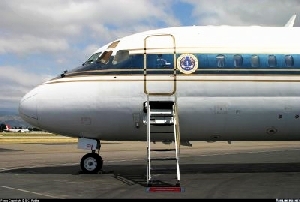
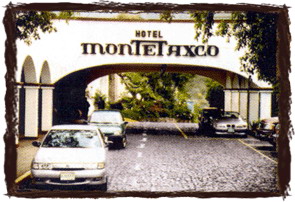
Thanks for that.
Great link C.j. More on narco-assassin turned CIA superstar here Ric Prado here: http://www.theatlantic.com/politics/archive/2012/07/the-terrifying-background-of-the-man-who-ran-a-cia-assassination-unit/259856/.
[…] Starwood’s air charters are currently being run out of Toluca, whose airport in recent years has been at the center of numerous major drug trafficking scandals, many of which have been extensively covered here. […]
Not finding a contact email on your blog, I arbitrarily put these links gere for you as this book mentions conteas, CIA, drug smuggling, Hollywood, FL, al Qaeda and such in the first couppe of pages:
http://books.google.com/books?id=byedxT83ZpYC&printsec=frontcover&source=gbs_ge_summary_r&cad=0#v=onepage&q&f=false
[…] Drug cartels control Mexican airports This entry was posted in Non classé. Bookmark the permalink. ← Gilbert Collard demande un référendum relatif au traité sur la stabilité […]